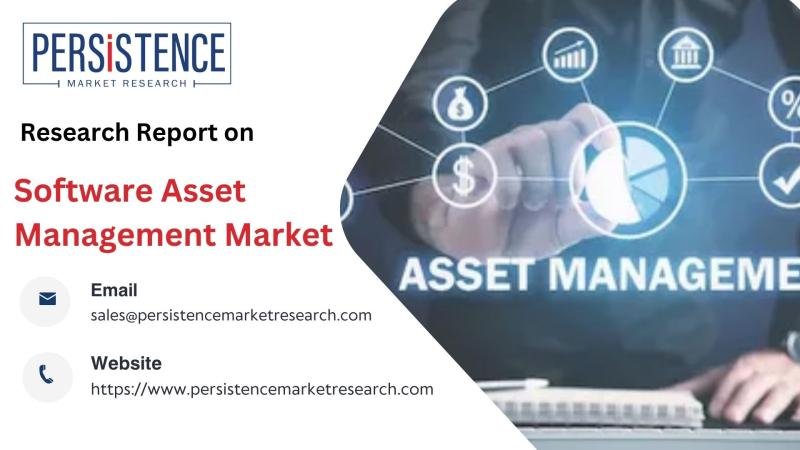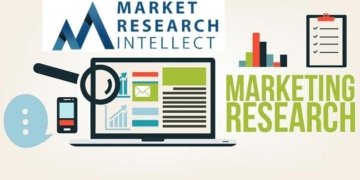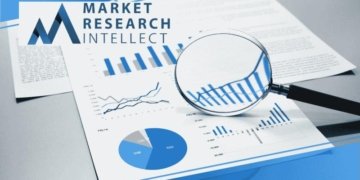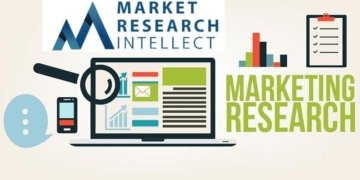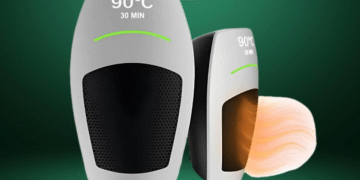The global Software Asset Management (SAM) Market is experiencing a significant upsurge, driven by increasing regulatory requirements, heightened cybersecurity concerns, and the accelerating shift toward cloud environments. Software asset management, at its core, refers to a strategic approach that organizations use to manage, control, and optimize software assets across their lifecycle-from procurement to retirement. The aim is to ensure that software usage aligns with licensing agreements, minimizes unnecessary expenditure, and enhances overall IT efficiency.
Get a Sample PDF Brochure of the Report (Use Corporate Email ID for a Quick Response):
https://www.persistencemarketresearch.com/samples/18409
In 2022, the SAM market was valued at approximately US$ 2,120.4 Million and is projected to surge to US$ 7,149.9 Million by 2033. With an anticipated CAGR of 11.8% from 2023 to 2033, the market shows strong momentum. The rising complexity of software environments, fueled by the hybrid workforce and the proliferation of software-as-a-service (SaaS) tools, has significantly augmented demand for robust SAM solutions. Notably, cloud-based deployment leads the charge, commanding a 55.4% market share in 2022, while small and medium enterprises (SMEs) accounted for a dominant 59.1% market share, highlighting the sector’s increasing adoption among businesses with limited IT resources.
North America led the global SAM market, accounting for 28.2% of the global revenue in 2022. The U.S., in particular, benefits from strict compliance mandates and robust IT infrastructures, making it a ripe ground for SAM solutions. Meanwhile, India is emerging as a high-growth region with a 13.1% CAGR, driven by its burgeoning IT sector and a large number of SMEs. In contrast, France has cemented its position with a mature IT ecosystem and cost optimization initiatives among enterprises, pushing SAM deployment forward.
Key Highlights from the Report:
➤ The Software Asset Management Market is projected to reach US$ 7,149.9 Million by 2033, growing at a CAGR of 11.8%.
➤ Cloud-based deployment held the largest share in 2022 at 55.4%, driven by scalability and flexibility needs.
➤ Small and medium enterprises led the organization size category, contributing to 59.1% of the total market share in 2022.
➤ North America maintained market dominance with a 28.2% share in 2022, fueled by regulatory compliance needs.
➤ India is expected to register the fastest growth rate at a CAGR of 13.1% between 2023 and 2033.
➤ Key players such as Flexera, Ivanti, and Snow Software are focusing on innovation, integration, and acquisition to gain competitive edge.
Market Segmentation
The software asset management market is segmented based on deployment model, component, organization size, and industry vertical. Among deployment models, cloud-based SAM solutions dominate due to their agility, remote accessibility, and ease of scalability. The on-premise segment still holds significance, especially in sectors where data residency and control are critical.
By component, the market bifurcates into software and services. The services segment includes consulting, training, and managed services, which are essential for enterprises seeking guidance in navigating complex licensing ecosystems.
Based on organization size, small and medium enterprises have demonstrated higher adoption rates owing to their need for simplified, cost-effective IT asset management systems. On the industry front, sectors such as IT & telecom, BFSI, healthcare, and government are leading adopters of SAM due to strict compliance obligations and high software usage intensity.
Regional Insights
North America remains at the forefront of the SAM market, particularly due to stringent regulatory frameworks like SOX and GDPR, which necessitate organizations to maintain transparent software usage and licensing logs. The United States, holding a 24.4% share in 2022, is witnessing increased software audits, further boosting the adoption of SAM platforms.
In Europe, nations such as France, Germany, and the UK are emphasizing cost optimization and asset visibility, especially in the post-COVID digital transformation wave. France’s well-established IT infrastructure fosters rapid adoption, especially among large enterprises.
Asia-Pacific, particularly India, is witnessing rapid market penetration due to an expanding startup ecosystem, digital-first government initiatives, and affordable internet penetration. India’s booming IT sector, coupled with software piracy concerns, is compelling firms to invest in SAM platforms.
Latin America and the Middle East & Africa are gradually catching up, spurred by increasing digitization, albeit at a slower pace due to limited awareness and infrastructure constraints.
Market Drivers
The advent of cloud technologies, combined with the increasing complexity of software license agreements, is a primary driver behind the rising demand for SAM solutions. As organizations adopt multi-cloud and hybrid work environments, the need for centralized software visibility and control becomes critical. Furthermore, heightened awareness of cybersecurity risks and regulatory audits has made software asset transparency a business imperative. SAM tools not only ensure compliance but also offer analytics that assist in cost optimization and forecasting, delivering tangible ROI.
Market Restraints
Despite its advantages, the SAM market is hampered by a lack of awareness, especially among smaller businesses. Many organizations are either unaware of their license entitlements or fail to recognize the benefits of proactive asset management. Moreover, the complexity of software licensing models, varying from vendor to vendor, creates challenges in implementation. These challenges are compounded by the need for continuous updates, staff training, and change management, which some businesses are reluctant to invest in.
Market Opportunities
Opportunities in the SAM market are abundant, especially with the rise of SaaS applications, IoT devices, and digital transformation initiatives in emerging economies. Countries like India, Brazil, and Indonesia present untapped growth potential, where large SME clusters can benefit from affordable, scalable SAM tools. Additionally, integration with AI and automation can significantly enhance the capabilities of SAM platforms, enabling real-time insights, anomaly detection, and predictive analytics to optimize software spend further. The shift towards unified endpoint management and ITSM platforms also opens avenues for deeper platform integration and expanded service offerings.
Frequently Asked Questions (FAQs):
◆ How big is the Software Asset Management Market in 2023?
◆ Who are the key players in the global Software Asset Management Market?
◆ What is the projected growth rate of the Software Asset Management Market?
◆ What is the market forecast for Software Asset Management through 2033?
◆ Which region is estimated to dominate the industry through the forecast period?
Company Insights
• IBM Corporation
• Freshworks Inc.
• Ivanti
• Solarwinds
• Zoho Corporation
• Aspera
• Snow Software
• BMC Software
• SAP SE
• Hewlett Packard Enterprise
• Microsoft Corporation
• VMware Inc.
• Oracle Corporation
Contact Us:
Persistence Market Research
G04 Golden Mile House, Clayponds Lane
Brentford, London, TW8 0GU UK
USA Phone: +1 646-878-6329
UK Phone: +44 203-837-5656
Email: sales@persistencemarketresearch.com
Web: https://www.persistencemarketresearch.com
About Persistence Market Research:
At Persistence Market Research, we specialize in creating research studies that serve as strategic tools for driving business growth. Established as a proprietary firm in 2012, we have evolved into a registered company in England and Wales in 2023 under the name Persistence Research & Consultancy Services Ltd. With a solid foundation, we have completed over 3600 custom and syndicate market research projects, and delivered more than 2700 projects for other leading market research companies’ clients.
Our approach combines traditional market research methods with modern tools to offer comprehensive research solutions. With a decade of experience, we pride ourselves on deriving actionable insights from data to help businesses stay ahead of the competition. Our client base spans multinational corporations, leading consulting firms, investment funds, and government departments. A significant portion of our sales comes from repeat clients, a testament to the value and trust we’ve built over the years.
This release was published on openPR.
